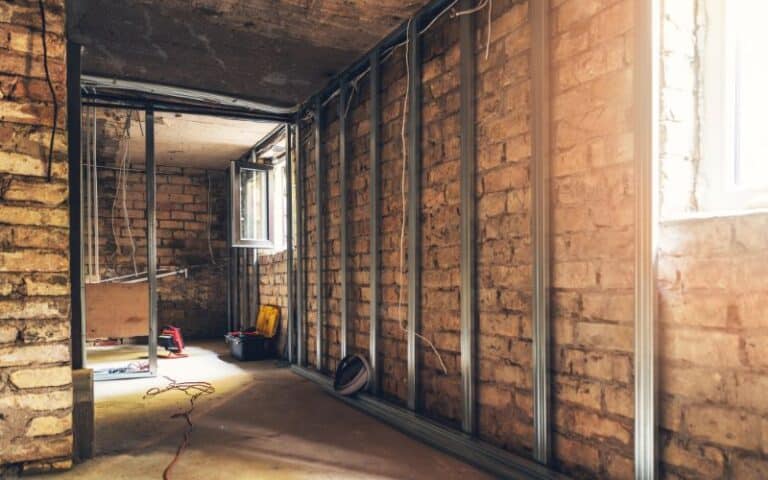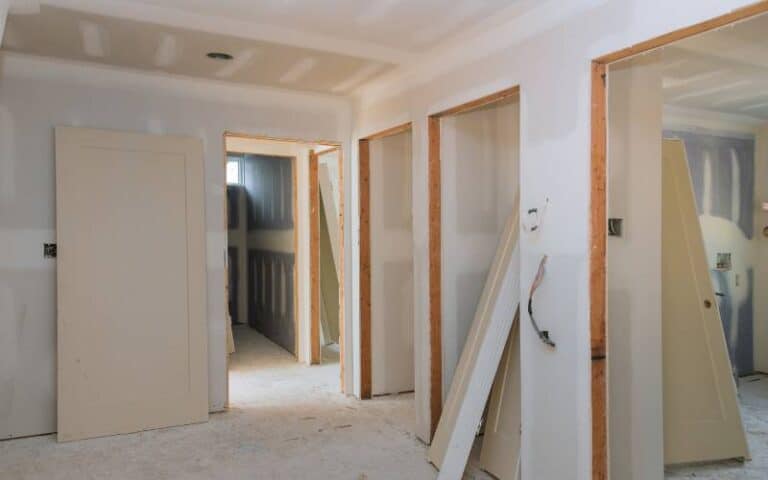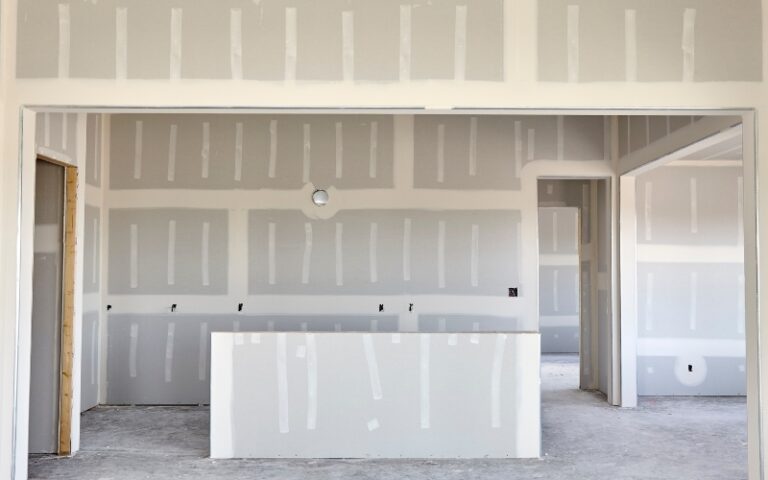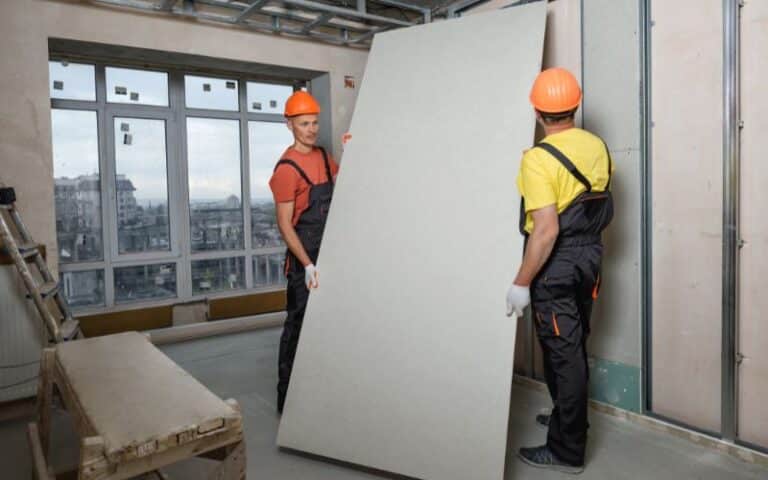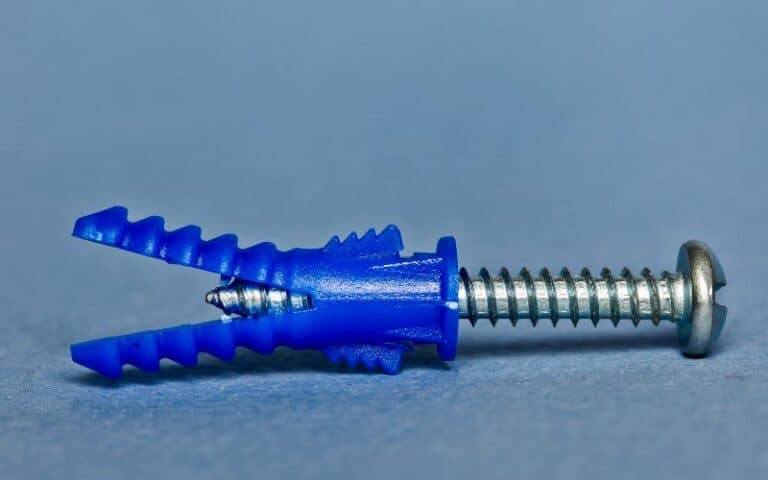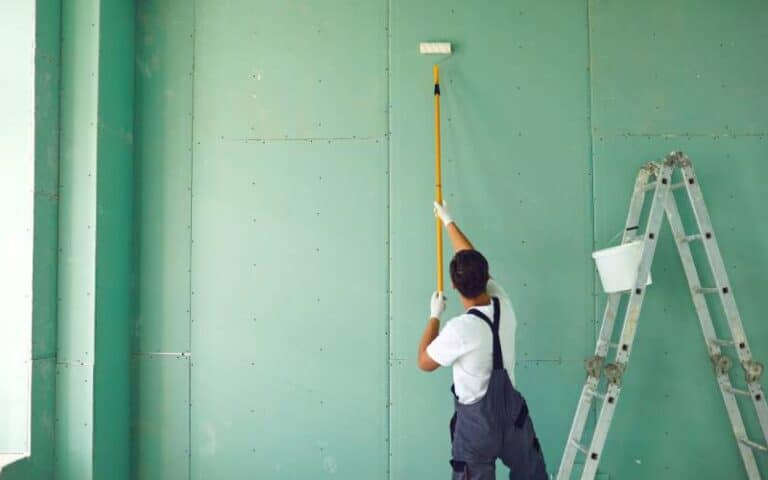Drywalls are a practical tool homeowners use to decorate and construct their walls.
However, like every other finishing and paint, dry walls can get damaged, and pinholes could appear.
Luckily, these cracks and pinholes are easy to repair and require no fixing expertise.
That said, below are some reasons your drywall has pinholes and the necessary steps to eliminate them.
One of the significant causes of pinholes on drywall is an overstretched door knob punching a hole in the wall each time the door gets opened. Also, merely hitting the wall can cause holes in the drywall over time. Applying a joint compound over the holes is best when repairing pinholes on drywalls.
In this article, I’ll walk you through why your drywall has pinholes on them and how to fix the issue permanently. I’ll then explain the best ways to prevent pinholes in your drywall.
Ready for a Drywall Quiz?
What Causes Pinholes in Drywall?
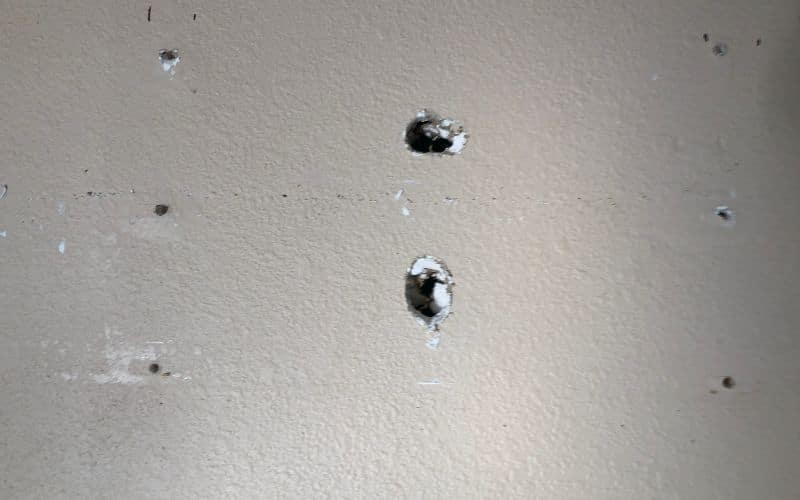
Pinholes have become one of the most recurring drywall issues over time.
If not handled at the first sign or when you first noticed it, it would cause a severe effect and may even result in complete and total damage to your drywall.
However, you can only attempt to eliminate pinholes if you have a detailed knowledge of the significant causes.
These causes could either be external factors, or you may be responsible for why there are pinholes on your drywall.
I’ll outline some of the causes of this issue below, so read on.
- An overstretched doorknob can pinch and pierce holes in your drywall each time you open your door.
- If you are constantly hitting the walls with your palms or drilling nails into your wall all the time.
- Poor environmental conditions such as too much rainfall can cause water to rise on the wall or, on the other hand, too much heat on the wall surfaces.
- Uneven or contaminated surfaces before drywall installation can affect coating and painting.
- Improper application of drywall due to poor atomization of spray materials before and after spraying
- Use of inappropriate and incompatible skimming and priming materials, such as Redgard
- Solvent release from paint, lining, and even coating to the drywall
- Old, worn-out, or damaged drywall will have pinholes on them and develop bubbles in them.
- Household insects are also capable of making pinholes in your drywall.
How Do You Prevent Pinholes In Drywall?
Generally, the best way to avoid pinholes on your wall is to adhere to the skimming, coating, and painting drywall guidelines.
To this effect, always seek professional help and services for your drywall installation and repairs.
The following steps are necessary for the prevention of pinholes, and they include, among other preventive measures;
#1. Fix Your Doorknob Issue
Since a broken door knob is capable of causing pinholes on drywall, always check your door handles if you notice any holes around the door area.
This step is a quick and easy approach to removing pinholes, requiring you to fix or replace the door handles and knobs.
#2. Environmental Control
As mentioned earlier, not all weather conditions suit your drywalls. For instance, high humidity and high ambient temperature levels affect drywall in very negative ways.
The environmental control code is usually included in your customer data sheet to enable you to understand the best type of drywall to purchase and how to maintain it.
Ensure you adhere to it strictly.
#3. Contaminated And Uneven Surfaces
Dirt, dust, holes, sand, and uneven wall surfaces are significant contaminants on your wall and contribute to most pinhole issues.
Before installing your drywall, ensure you have removed any contaminants on your wall.
Avoid rough and uneven walls, or still; you can always use a skim coat to level up your rough surface.
You can also follow detailed and appropriate Quality Assurance Procedures to help you deal with uneven and contaminated walls better.
#4. Use Only Authorized And Acceptable Equipment For Drywall Installation
One of the significant causes of pinholes on drywall is the use of the wrong applicator equipment and poor maintenance.
However, the best way to deal with this issue is to use only authorized equipment for drywall installation.
Additionally, ensure your equipment is always clean and free from dirt and dust.
#5. Poor And Inadequate Film Thickness
Regarding drywall installation, the thicker the film, the better the penetration resistance.
Always add double layers of drywall during installation, which protects your walls from cracks, holes, and damage for a long time.
#6. Use Only Trusted Professionals For Your Drywall Installation
Another way to prevent pinholes on your wall is to use professionals and companies that have gained good reports and positive customer reviews.
This step is the ultimate solution because hiring an expert gives you a better chance of effectively completing your work.
For this, I recommend the KUEGROUP. They are among the best, most reliable, and most competent contractors you can hire for drywall repair, maintenance, and installation.
How Do You Fix Pinholes In Drywall?
Before fixing the pinholes on your drywall, the first thing you should do is know the exact size of the hole, the equipment to use, and the degree of damage.
For instance, a small hole can easily get fixed using a joint compound and a putty knife.
On the other hand, a medium hole is more complex to fix and requires a thicker layer of joint compound over it.
Below is a table showing the best way to fix a pinhole concerning the hole size and diameter and the tools necessary for repair.
| Sandpaper, joint compound, and putty knife | Drywall mesh, putty knife, screwdriver, interior paint, drywall compound, and masking tape |
|---|---|
| Small hole ½ – 2 inches | Sandpaper, joint compound and putty knife |
| Medium hole 6 inches | Plywood 1X3, joint compound, putty knife, screwdriver, paintbrush, gloves |
| Large hole 7+ inches | Plywood 1X3, joint compound, putty knife, screwdriver, paint brush, gloves |
How To Fix Pinholes In Drywall Without A Patch?
You can often fix the pinhole issues without making it look too obvious. You may want to fix your drywall without a patch and wonder how to do that. I’ll give you a detailed guide.
However, the size of the hole on the wall and the location contribute to the best method you will need to fix the pinholes on your drywall.
Fortunately, fixing a pinhole on your drywall without a patch is possible. Here is a step-by-step guide to doing it.
#1. How To Fix Small Pinholes In Drywall Without A Patch?
Fixing the tiny holes in your drywall is easy and has no complicated steps. You may not use any joint compound applicator equipment to fix the issue.
Here is a step-by-step guide to fixing small Pinholes
- Use a putty knife to apply joint compound to Pinholes
- After that, use the knife to even out the joint compound on the wall till it blends properly.
- Wait for it to dry, then use sandpaper to scrape it.
- If there was paint on the wall, ensure you repaint it after fixing the drywall.
Tip: Ensure to use the same color of joint compound with your drywall when covering up Pinholes.
#2. How To Fix Big Pinholes Without A Patch?
Doorknob issues cause most big Pinholes and require precision as you repair them. When fixing a large pinhole, you must purchase a screen patch to cover the hole adequately.
You can, however, fix your pinholes without using a patch.
Follow these guiding steps for all your large pinhole fixes.
- Spread a large chunk of joint compound on your drywall using a putty knife.
- Allow the joint compound to dry and let it sit for 24 hours
- After that, use your sandpaper to scrub the joint compound till it blends completely.
- Lastly, prime and print.
Tip: Even though these steps are easy to work through, you should always contact the services of a professional to help you fix whatever issue you may have on your drywall, especially Pinholes.

